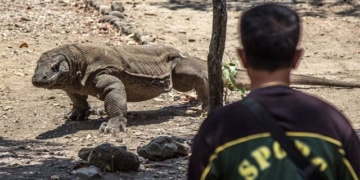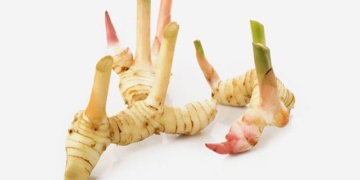Kiviaq is a traditional dish of the Inuit people in Northwest Greenland. It is characterized by a preparation method that shocks many: Stuffing 300 to 500 live seabirds, feathers and all, along with their organs into a freshly skinned seal skin, burying it underground for several months, and then digging it up to eat on the spot, without any cooking involved.
The Habitat of the Dovekie
In Greenland, the Inuit make up only about 1% of the population. Before the 19th century, this ethnic group was unaware that there were many other peoples in the world besides them.
In 1818, the explorer John Ross (Scotland) discovered the Inuit. According to Ross’s observations, Inuit society was non-agricultural and extremely peaceful. The main food source for the Inuit is wild animal meat.
Kiviaq is the Inuit’s favorite dish. Every year, starting from the end of spring, a seabird known as the Dovekie returns to fill the skies of Greenland. Experts estimate that Greenland is the breeding ground for 80% of the world’s Dovekie population, with an estimated 30 to 60 million pairs. The Dovekie weighs between 150 to 200 grams each.
The Inuit catch Dovekie using nets made from seal sinew (or skin) and walrus tusks (or wood). Each Inuit hunter carries a net to hunt with. With each swing of the net, they can catch one to several Dovekies. On good days, the Inuit hunting teams can catch up to a thousand birds. Each year, they can hunt tens of thousands of Dovekies.
The Inuit population was very low, with only about 200 individuals in the 19th century, increasing to 700 in the 20th century. Naturally, with such a small population, they could not consume tens of thousands of Dovekies all at once.
Northwest Greenland is a frozen land, where even in summer, the highest temperature reaches only 10 degrees Celsius. Throughout winter, the Inuit can hardly hunt anything. The unbalanced hunting yield between seasons forced them to develop methods of preservation, leading to the creation of Kiviaq.
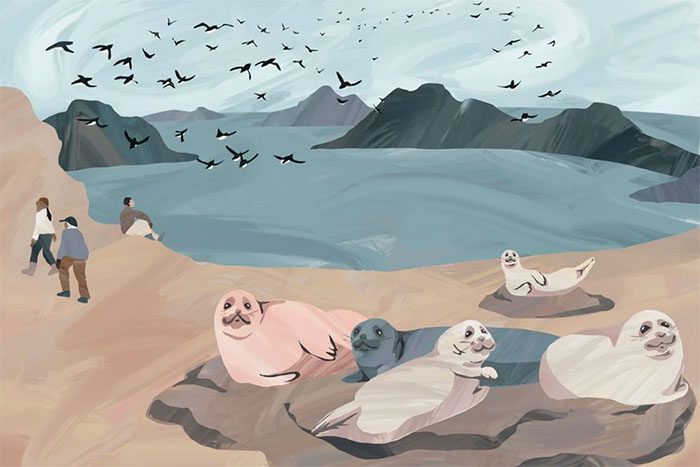
The ingredients of Kiviaq are seal and Dovekie. (Photo: Atlasobscura.com).
Shocking Cuisine
After catching the Dovekie, Inuit hunters kill each bird by twisting its wings behind its back, pressing down on its chest to crush its heart, and placing it in the shade. Depending on the number of Dovekies caught, they select a suitably sized seal, chop off its head, and skin it.
Once the pile of Dovekies has cooled to the ambient temperature, the Inuit stuff all the birds into the seal skin, sew it up tightly, dig a hole, and bury it to ferment.
After about 3 to 6 months, they dig up the “seal skin stuffed with dead birds”, remove each Dovekie, pluck the feathers, and eat them directly without cooking or seasoning.
Around the early 20th century, the world became aware of the Inuit’s Kiviaq. All recorded assessments were negative and mocking.
Some articles even claimed that Kiviaq was the cause of the death of the famous Danish explorer Knud Rasmussen in 1933. Whenever an Inuit died from food poisoning, people would blame it on “eating Kiviaq.”
In the early years of the 21st century, influenced by media and digital technology, Kiviaq became even more “infamous.” Some younger Inuit felt ashamed of the tradition of “eating rotten dead birds.”
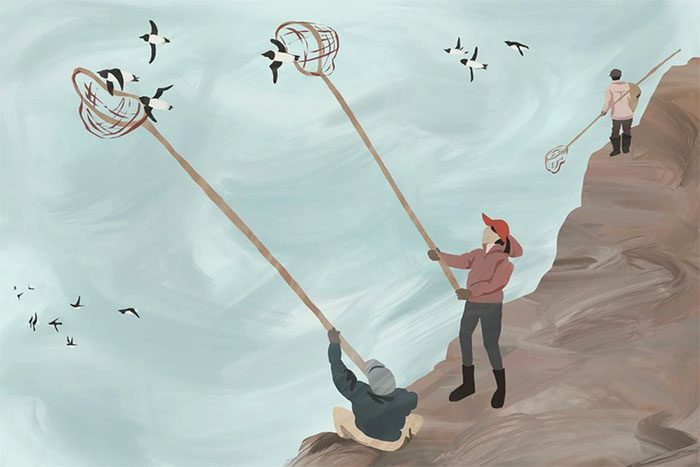
At the end of spring, the Inuit actively net Dovekies. (Photo: Atlasobscura.com).
A Tradition in Harmony with Nature
Contrary to the negative comments from outsiders, the Inuit remain loyal to Kiviaq.
In 2018, when microbiologist Aviaja Hauptmann (Greenland) visited Siorapaluk (North Siorapaluk) and inquired about Kiviaq, she was shooed away by the Inuit who thought she had come to “slander their dish.” However, once they learned she was there to “explore the unique culinary nuances,” they immediately welcomed her.
Essentially, Kiviaq is a type of fermented food. It shares similarities with many types of fermented foods in Arctic culinary culture, such as fermented fish, fermented mammal meat, and fermented eggs.
Like most fermented meats, Kiviaq has a very strong odor. According to Kiviaq enthusiasts, it has a flavor similar to blue cheese or Italian Parma ham.
“The technique for making Kiviaq is very simple. It deserves to be the number one method of food preservation and storage in this land with extremely long winters,” Mrs. Hauptmann asserts.
Since 2010, global culinary experts have begun to view Kiviaq differently. After studying the Inuit’s fermentation techniques and analyzing the fermented Dovekie meat, they discovered that it is not only safe to eat but also very delicious.
“Personally, I find Kiviaq tastier than cheese and more nutritious than any type of meat,” Hivshu, a resident of Siorapaluk and a keeper of Inuguhit culture, states.
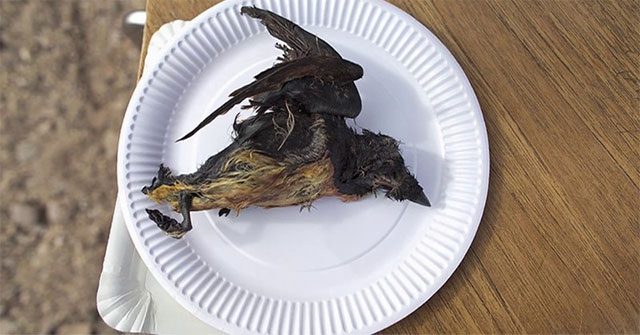
Like most fermented meats, Kiviaq has a very strong odor.
Beyond its nutritional value, Kiviaq also plays a role in community bonding. During Dovekie hunting season, all Inuit—men, women, young, and old—work together. Men handle the hunting, while women and children help gather, and the elderly cheer them on. “Each of us deeply understands the saying ‘one for all, all for one,’” Hivshu proudly remarks.
Greenland is gradually losing many local dishes, especially the fermented foods of the Inuit, due to external criticism. Compared to these dishes, Kiviaq is luckier as it is fiercely preserved by the Inuguhit people.
“For us, Kiviaq represents culture, tradition, and the future. After thousands of years, we have experimented, refined mistakes, and found the safest fermentation methods,” Hivshu confidently states.
The Dovekie is a robust breeding species. As long as the Inuguhit people do not give up, Kiviaq will continue to be an important local dish, even holding the potential to become a mainstream commercial product.
Currently, Kiviaq is a must-have dish at birthday parties, Christmas gatherings, and more for the Inuit. Thanks to researchers and objective assessments like those of Mrs. Hauptmann, it is gaining attention from many international diners.


















































